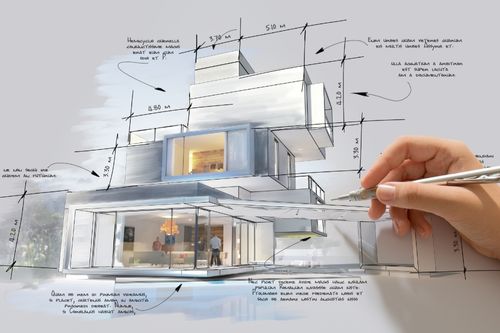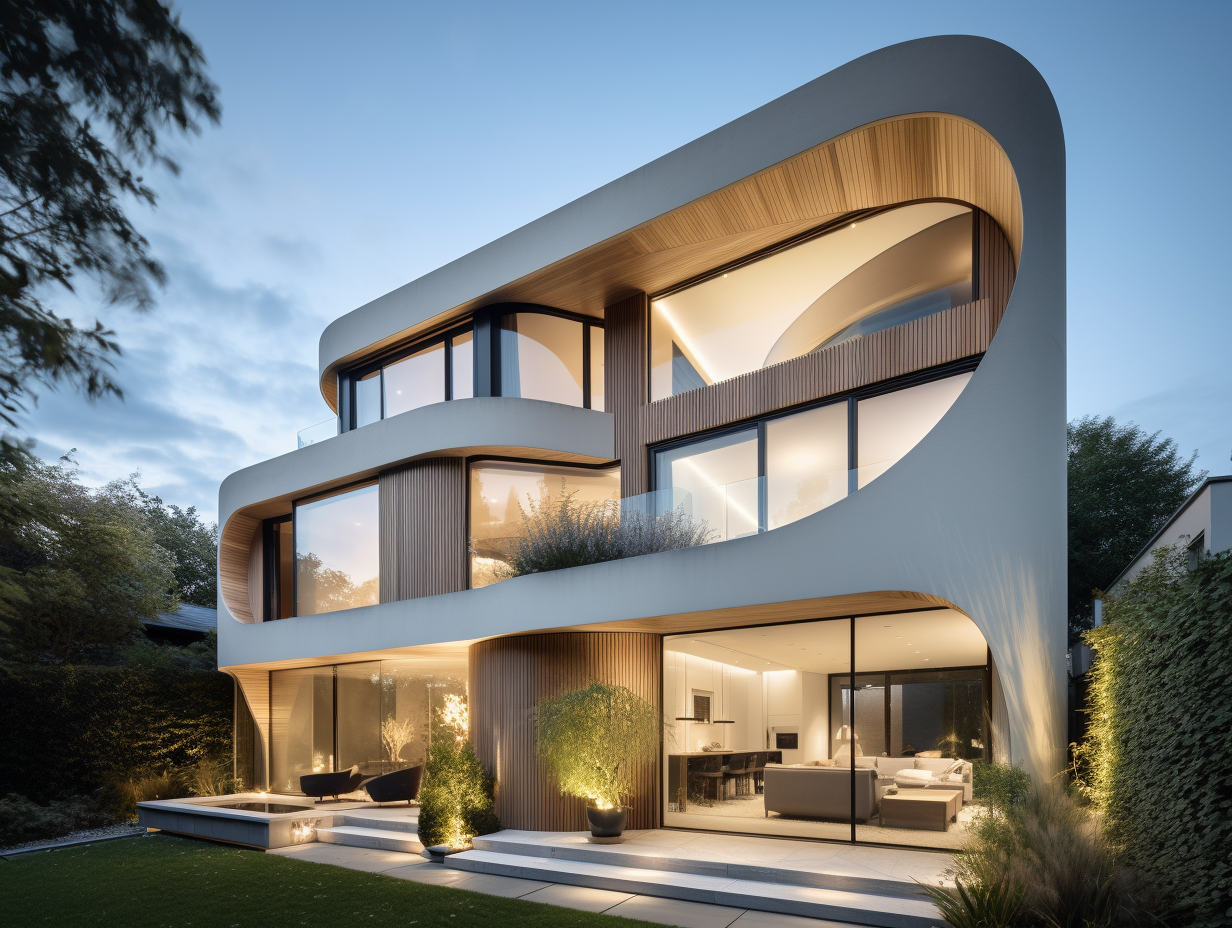A Thorough Introduction of Building Designs and Their Impact on Modern City Planning and Development
Architectural styles have long functioned as a mirror to the social worths and technological developments of their time, playing a critical duty fit modern-day city planning and development. From the magnificence of Neoclassicism to the utilitarian strategy of Brutalism, each design has presented one-of-a-kind ideas that influence city aesthetics and capability. As modern obstacles develop, including sustainability and area requirements, understanding these historic frameworks becomes essential. The resulting discussion not only educates future style techniques however also raises pertinent concerns about the equilibrium between heritage and advancement in our developing urban landscapes.

Historic Overview of Architectural Styles
Throughout background, building styles have advanced in action to cultural, technical, and environmental elements. Each duration mirrors the dominating values, beliefs, and improvements of its time, bring about an abundant tapestry of design that symbolizes human creative thinking and adjustment. The ancient people, such as the Egyptians and Greeks, developed fundamental designs that stressed proportion and percentage, offering both functional and aesthetic functions.
As societies transitioned through the Middle Ages, Gothic architecture emerged, characterized by its verticality and detailed describing, matching the spiritual ambitions of the age. The Renaissance marked a resurgence of classical ideals, merging art and design in cutting-edge methods that affected subsequent designs throughout Europe.
The Industrial Revolution introduced brand-new materials and construction techniques, prompting movements like Innovation, which tested standard kinds and welcomed simplicity and functionality. The 20th century saw a diversification of styles, with Postmodernism reacting versus the plain minimalism of its predecessor, incorporating historical referrals and diverse elements.
Today, architectural designs proceed to evolve, driven by globalization and sustainability worries, reflecting a vibrant interplay between heritage and innovation (cda architects). This historical summary emphasizes the importance of style as a mirror of societal development and as a stimulant for city advancement
Trick Architectural Styles Explained
The diversity of architectural designs reflects the myriad influences that form our constructed atmosphere, each personifying distinct attributes and social significances. Secret building designs include Classic, Gothic, Baroque, Innovation, and Postmodernism, each standing for unique historical contexts and visual ideologies.
Classical style, rooted in old Greece and Rome, highlights symmetry, proportion, and making use of columns. In comparison, Gothic style, growing in the center Ages, is characterized by pointed arches, ribbed vaults, and flying buttresses, producing a heavenly high quality in basilicas. Baroque style, arising in the 17th century, is marked by grandeur, fancy decoration, and a dynamic interplay of light and shadow.
Innovation, which acquired momentum in the early 20th century, prioritizes function over type, using new materials like steel and glass to create minimalist structures. Postmodernism, responding versus the austerity of Innovation, welcomes eclecticism and historical recommendation, often incorporating lively elements and paradox.
Understanding these designs provides insight right into the cultural narratives and technological improvements of their respective eras, highlighting how design offers not just as a shelter, but as a representation of societal worths and desires.
Effect on Urban Preparation
In forming the advancement of cities, architectural designs considerably influence urban planning choices. The option of building design commonly determines the aesthetic appeals, functionality, and overall personality of urban environments. cda architects. Modernism, with its focus on minimalism and functionality, urges open rooms and the combination of technology, shaping city designs that focus on performance and access. On the other hand, standard styles may highlight historical conservation, bring about city layouts that keep social heritage and promote pedestrian-friendly environments.
Additionally, building styles can influence zoning regulations and land use plans. Urban coordinators need to take into consideration the prevailing architectural fads when creating districts, making sure that new developments balance with existing structures. This factor to consider fosters natural urban landscapes and boosts area identification.
The implementation of certain architectural styles can likewise affect socioeconomic aspects within a city. Premium modern layouts might bring in upscale locals and organizations, leading to gentrification, while extra inexpensive housing solutions might focus on sensible and lasting designs to accommodate diverse populaces. Inevitably, the interaction between architectural designs and metropolitan preparation develops vibrant cities that show both historical context and contemporary demands, forming the lived experiences of their occupants.
Sustainability and Modern Architecture

Contemporary architectural activities, such as biophilic design and eco-friendly style, advocate for structures that integrate with their surroundings, making use of natural materials and promoting biodiversity. These designs often include renewable energy resources, such as solar panels and wind generators, to lower dependence on fossil fuels and reduced carbon footprints.
Additionally, the integration of look at more info sophisticated modern technologies, such as smart structure systems, improves energy administration, optimizing resource usage while making certain occupant comfort. Innovative water administration approaches, consisting of rain harvesting and greywater recycling, more contribute to sustainable city environments.
Significantly, sustainability expands past ecological problems; it encompasses social and economic dimensions. By fostering area well-being and promoting inclusivity, modern architectural styles align with sustainable development goals. Subsequently, the advancement of building techniques proceeds to form resistant cities that not just satisfy the requirements of the present but also safeguard the future for generations to come.
Community Involvement in Style
Community engagement in layout acts as a vital bridge in between designers and the populations they serve, making sure that the developed environment mirrors the demands and goals of its users. This joint procedure invites area participants to contribute their understandings and choices, fostering a sense of ownership and obligation toward the rooms they populate.
Efficient community involvement employs numerous techniques, such as workshops, surveys, and public discussion forums, to gather diverse point of views. These methods promote a two-way dialogue, allowing designers to understand regional contexts while encouraging citizens to voice their worries and desires. This inclusivity not just enhances my response the style quality but additionally promotes social equity by resolving the special challenges dealt with by marginalized teams.
Furthermore, area involvement can cause cutting-edge services that could not emerge in a standard layout process. By incorporating regional expertise and cultural values, engineers can create areas that reverberate even more deeply with users, improving functionality and sustainability. Inevitably, prioritizing neighborhood involvement in layout processes leads to atmospheres that support social communications, assistance well-being, and enhance area connections, thereby playing an essential duty in shaping modern-day urban landscapes.
Conclusion
Architectural designs have exceptionally affected modern-day city preparation and advancement, mirroring evolving cultural and technological contexts. The integration of historical appearances with modern needs fosters city settings that focus on sustainability and area involvement. As cities proceed to expand and adjust, the recurring discussion in between building heritage and modern style principles will certainly continue to be necessary in creating comprehensive, dynamic rooms that boost lifestyle and advertise social equity. The future of city growth rest on this harmonious balance.